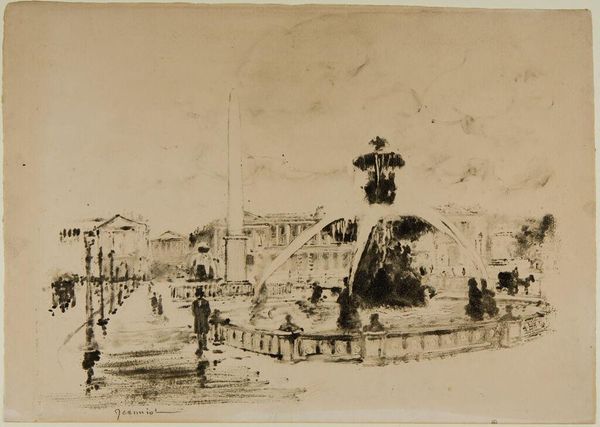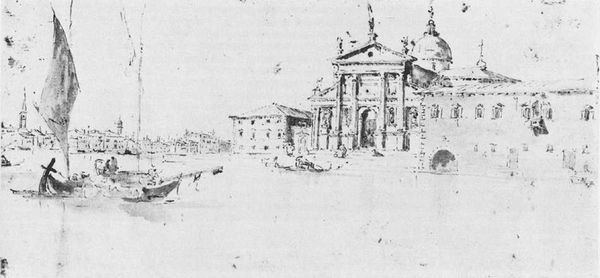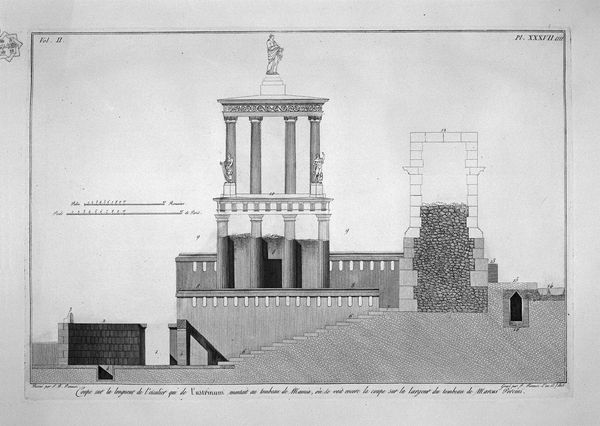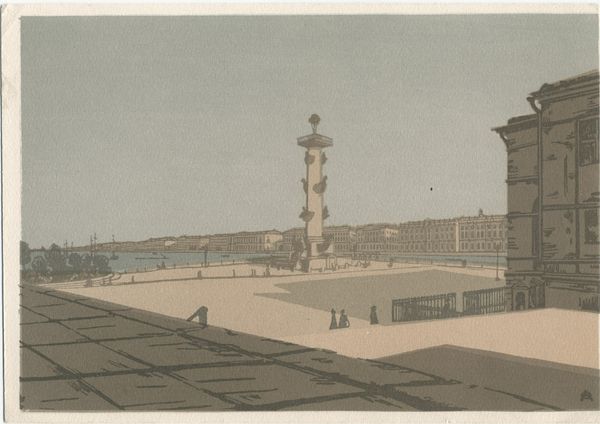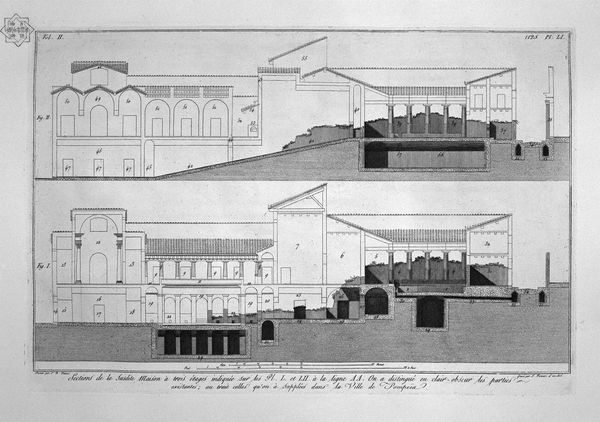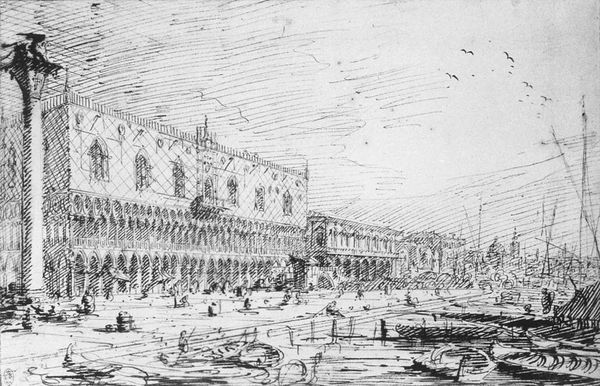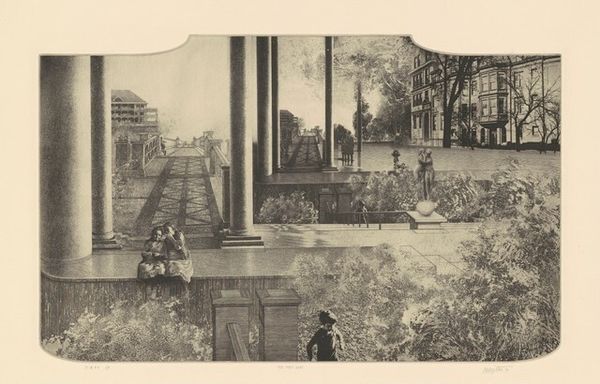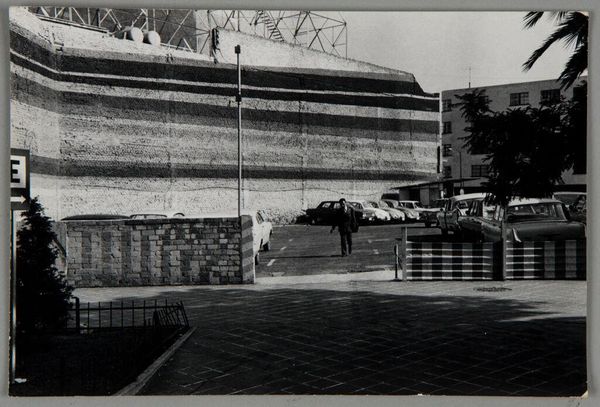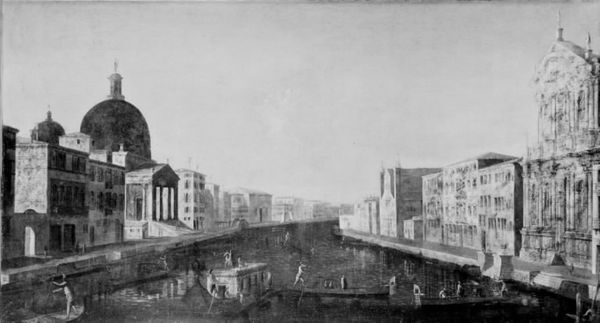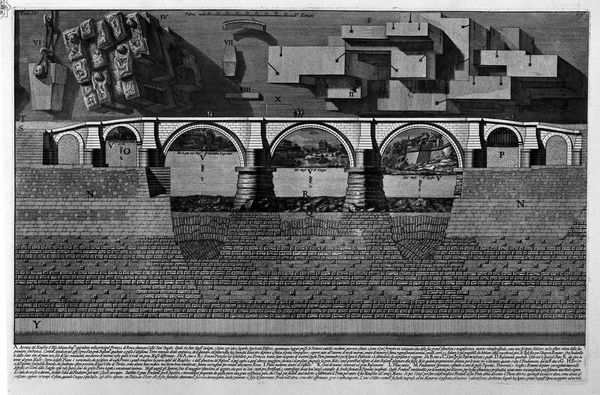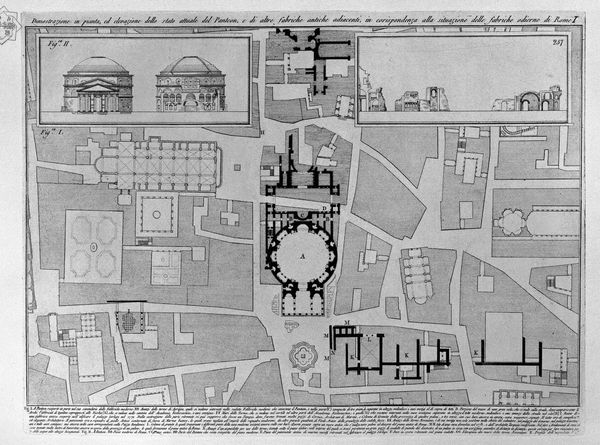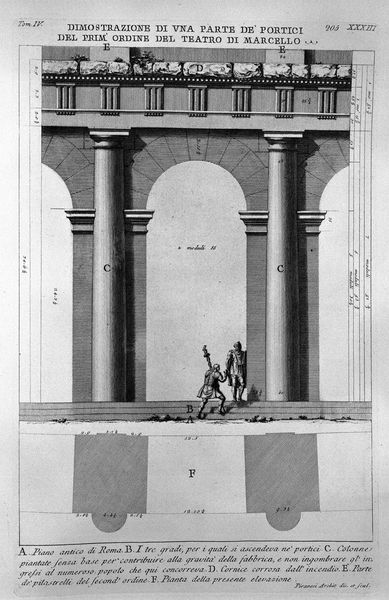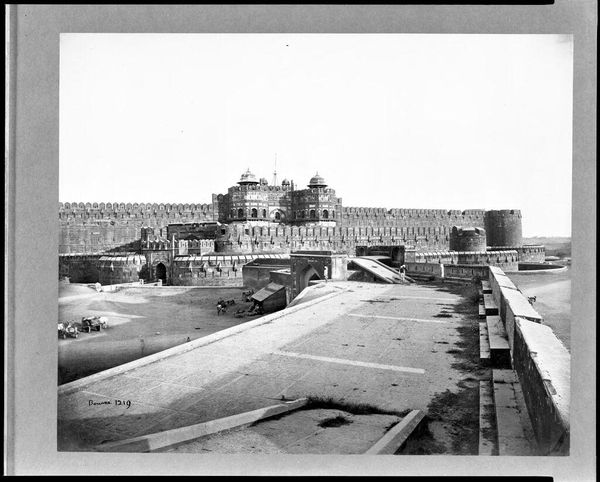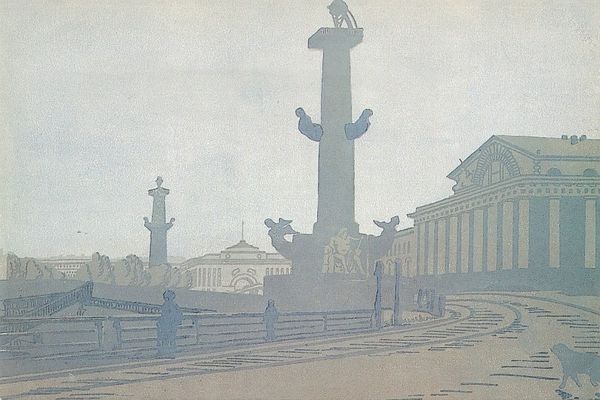
drawing, print, ink
#
drawing
# print
#
ink
#
russian-avant-garde
#
cityscape
Copyright: Public domain US
Editor: This is Anna Ostroumova-Lebedeva’s "Neva through the columns of the Exchange," created in 1908 using ink as a print and drawing. I'm struck by how the artist uses these imposing architectural structures to frame the vastness of the cityscape beyond. It feels both grand and a little distant. As a historian, what catches your attention in this piece? Curator: I see a fascinating intersection of imperial power and avant-garde experimentation. This isn't just a pretty picture of St. Petersburg; it’s a visual statement about the city’s identity at the cusp of significant social upheaval. Look how the Exchange, a symbol of capitalist ambition, is juxtaposed with the river Neva and its open, potentially uncontrolled, flow. What statement do you think Ostroumova-Lebedeva is making about the prevailing economic structures? Editor: That's interesting. I hadn't considered the tension between the built environment representing economic systems, and the river representing... well, freedom, maybe? Curator: Perhaps. And consider the date: 1908. Just a few years after the first Russian Revolution and a decade before the Bolsheviks seized power. The print exists not in a vacuum but in the midst of societal anxiety. Do you think the muted tones contribute to this tension, or is it something else? Editor: Possibly the tones reinforce the feeling. Thinking about it that way, the choice of a print, typically more accessible and reproducible than painting, could imply a democratizing intent? Maybe Ostroumova-Lebedeva wanted to present this view, this tension, to a wider public? Curator: Exactly! The choice of medium speaks volumes. Prints allowed for wider circulation, and Ostroumova-Lebedeva was deeply engaged in the artistic debates of her time about art’s social role. By framing the imperial facade through these rigid columns, she makes us question the foundations on which this power rests. Editor: I see the buildings, but now I'm noticing the structures holding them in place. It certainly puts a new spin on things. Thank you! Curator: My pleasure. It's always enlightening to reconsider art through the lens of history and see how the seemingly simple images carry a charge that’s waiting to be rediscovered.
Comments
No comments
Be the first to comment and join the conversation on the ultimate creative platform.
